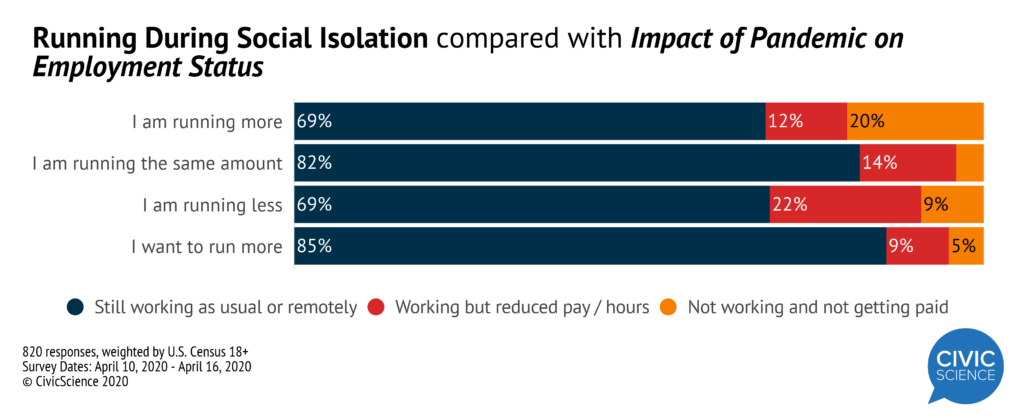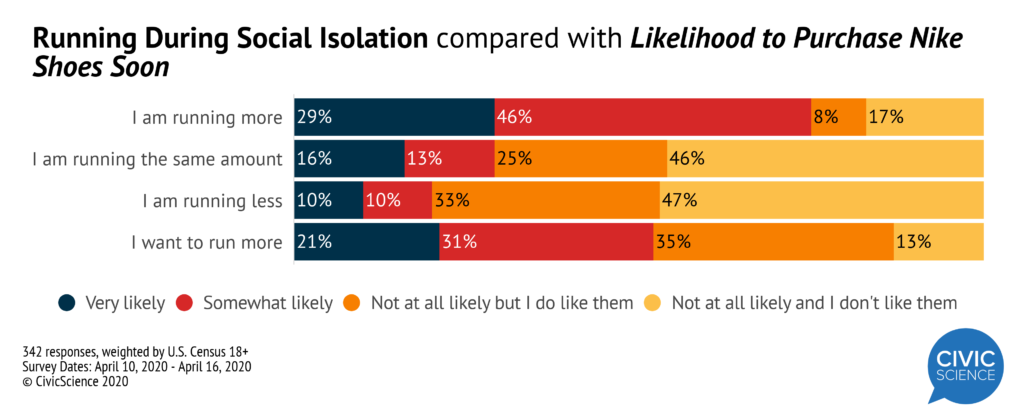I’ve been running more lately. Not quickly, not particularly well, but certainly more. The bar was fairly low, as I usually would go for a run outside once per week during the one day of sunshine that Pittsburgh normally gets in a given 7-day period. Now, I’m out there regardless of the weather, the rain, the wind, etc. I’m like a mailman, but for plodding jogs around my Mt. Washington neighborhood loop.
I don’t think it’s doing much for my physical health, other than being better than “doing nothing,” but it’s been seeming to improve my mental health. I don’t have a lot of excuses to get out of the house, and the ones I do have are usually panic-inducing trips to a store where who knows who has touched who knows what. Walking the dog and going for jogs are the last two things I seem to have that allow outdoor activity without risking an anxious few hours replaying what I touched and when I sanitized.
Turns out, there are lots of people who appear to feel the same way. About 1 in 3 U.S. adults are either running more during the pandemic, or would like to do more running.
If you read my last post, you’ll know the first hypothesis I checked: is it the young children driving us insane that influences our decision to run? Yes, indeed. Parents of children 3- to 5-years-old (otherwise known as the “Why Did I Do This” years) are slightly more likely to be running more, but more than twice as likely to want to run more. I’ll leave it to your imagination to fill in what they want to run from.
Unfortunately, it’s not all whimsical reasons: some people are using newfound unemployment to improve their physical health. Those who are running more during the pandemic are twice as likely to be people who are no longer working and not receiving any money. In that regard, it’s still a stress reliever, but it’s much less cutesy. In fact, I would argue that it’s an interesting finding regarding what it is we’d be doing if not for all this work we have to do to survive: the exercise and obesity crisis in America is well-documented, and perhaps the thing holding us back is the hectic schedules we’re expected to keep if we want to keep a roof over our heads and food in the mouths of our families.
Helping to support this theory: those that “want to do more” are the ones that are still working the same amount (or more) during the pandemic. Even during a national crisis where people are forced to drop a decent amount of their social obligations, people can’t find time to work out the way they’d like. Email doesn’t shut off at a given time.
And this employment situation has ramifications on the market, believe it or not. Apparel is in big trouble during the pandemic, so every advantage those brands can get is fairly important. It’s notable then that while those running more are the most likely group to be considering a Nike purchase soon, they’re significantly more likely to be only “somewhat likely.” Nike’s the leader in athletic apparel sales but with that leadership role comes a price premium, and for those that are running more because of lost income, it’s quite possible the hesitancy is mainly about just how much a pair of Epic Reacts cost compared to your average pair of New Balances.
It also helps explain the stress levels. Employment and income concern in the United States is higher than it has ever been since CivicScience has been measuring it via our publicly available Economic Sentiment Index. The bad news is that they’re experiencing stress at such a high level: more than 80% are experiencing stress, which is 25 points higher than the average American during the same time period.
The good news is that those most stressed are seeking an outlet via exercise, and it’s working. While they’re one and a half times as likely to have experienced stress in the past week, they’re also the most likely group to have experienced joy, and are significantly more likely to report feeling it compared to those running less.













